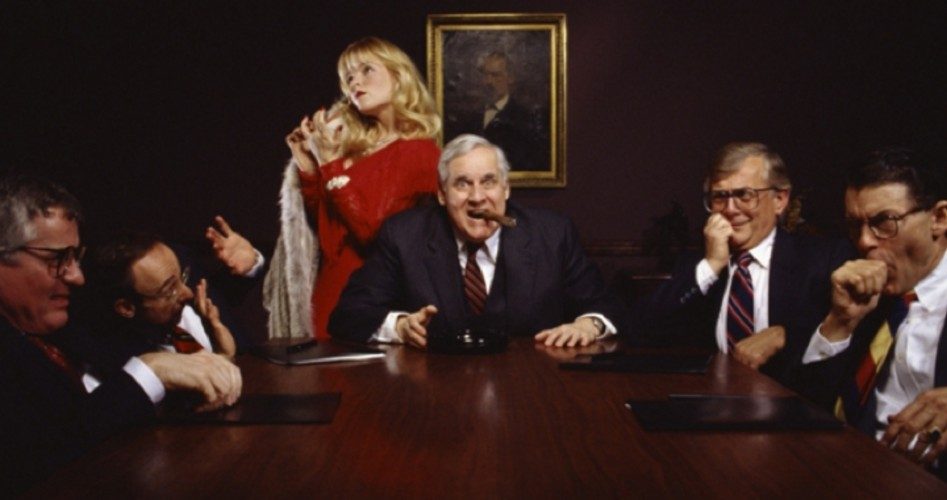
In another so-called research study about wealth inequality, the liberal think-tank Sage Foundation said in June that while the super-rich have fully recovered from the Great Recession, the vast majority of Americans have not. Specifically their report shows that median household net worth “was $32,000 lower in 2013 that [it was] 10 years earlier,” a decline of 36 percent. It concluded:
Through at least 2013, there are very few signs of significant recovery from the losses in wealth experienced by American families during the Great Recession. Declines in net worth from 2007 to 2009 were large, and the declines continued through 2013.
These wealth losses, however, were not distributed equally.… Wealth inequality increased significantly from 2003 through 2013; by some metrics inequality roughly doubled.
By using the word “inequality” rather than the better descriptor “difference,” it is clear that Sage is involved in the political debate over how this happened, who’s responsible, and what can be done “to fix it.” While Sage shied away from remedies, the New York Times, in reviewing the study, was sure that something is very wrong:
The reasons for these declines are complex and controversial, but one point seems clear: When only a few people are winning and more than half the population is losing, surely something is amiss.
This is the current politically correct siren song of greed, avarice, envy, and class warfare that has captured the attention of many on the Left in their attempt to gin up sufficient concern and voter angst for remedies ranging from taxing the rich to ever higher transfers of their wealth to the needy. Naturally those higher taxes would also have to be levied on the middle class, simply because there aren’t enough rich people around to fund those proposed transfers.
Last October, following his receipt of the Nobel prize for economics, Yale professor Robert Schiller said, “The most important problem that we are facing now today, I think, is rising inequality in the United States.” Just two months later Robert Reich, former secretary of labor in the Clinton administration, called economic inequality “a threat to our way of life.”
An anonymous YouTube video, “Wealth Inequality in America,” suddenly appeared early last year and has gone viral, with more than 15 million views. A brief screen shot of sources, however, reveals the usual suspects: CNN, Mother Jones, and ThinkProgress.com. It was learned later that much if not most of the statistical analysis behind that video came from Sage as well.
Responses to the current rush to judgment have been provided by others looking at the same data and coming to different conclusions. For instance, blogger Ironman at Political Calculations, using Census Data as his source, showed in his December 2013 post “that the amount of income inequality among U.S. individuals … has been essentially flat [since 1960].” He explained:
The bottom line is that the Census Bureau’s total money income data is the only valid source of data that allows us to determine the impact that individual income earners have within their families and households. It is the only data that can possibly allow anyone to determine whether economic or social changes are behind the trends occurring … over time.
Using other sources of data that do not allow the impact of individuals to be measured or isolated without acknowledging its limited utility in making any legitimate determination on the state of income equality within a population is the equivalent of analytical malpractice.
Thomas Sowell isn’t nearly as kind, accusing the data manipulators of having an agenda and skewing the statistics to fit it. In January he wrote in Investors Business Daily:
Only by focusing on the income brackets, instead of the actual people moving between those brackets, have the intelligentsia been able verbally to create a “problem” for which a “solution” is necessary.
They have created a powerful vision of “classes” with “disparities” and “inequities” in income, caused by “barriers” created by “society.” …
The confusion between statistical categories and flesh-and-blood human beings is compounded when there is a confusion between income and wealth.
The cry of inequality, whether it be “wealth” or “income,” intended to rally the masses around more taxes on the wealthy and more government transfers, appears to be falling on deaf ears. In the same study that formed the basis for the YouTube video that went viral last year, the authors blame the lack of response to the sales job (by CNN, ThinkProgress, Mother Jones, Schiller, and Reich — and others) on Americans who really don’t care. They wrote:
Americans exhibit a general disconnect between their attitudes toward economic inequality and their self-interest and public policy preferences, suggesting that even given increased awareness of the gap between ideal and actual wealth distributions, Americans may remain unlikely to advocate for policies that would narrow this gap.
That’s how a gaggle of left-wing college professors express their disgust and frustration that their campaign of propaganda, using slanted statistics and endlessly promoted by a media with an agenda, just isn’t working.
A graduate of Cornell University and a former investment advisor, Bob is a regular contributor to The New American magazine and blogs frequently at www.LightFromTheRight.com, primarily on economics and politics. He can be reached at [email protected].



